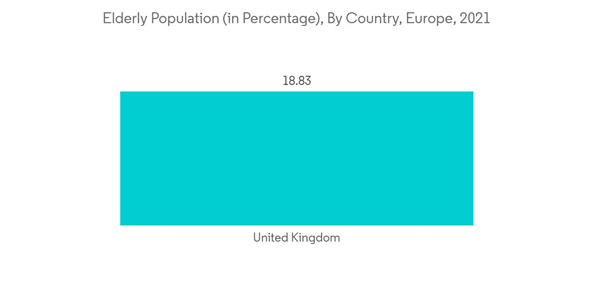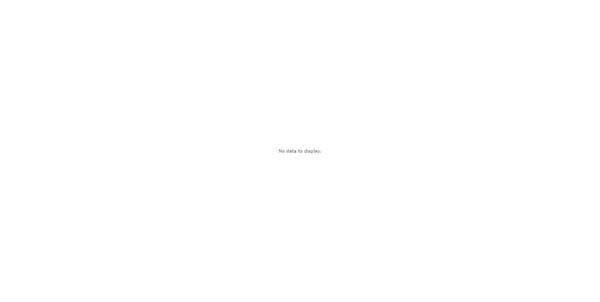The lockdown and government regulations imposed due to the pandemic led to the cancellation and rescheduling of neurologic surgeries that have impacted Europe's neurology monitoring market. For instance, an article published in the journal J. Neurol. Sci in January 2021, reported that data from Spain showed that 95% of hospitals reallocated neurologists to assist COVID-19 patients, and the number of beds in neurology wards was reduced by 89%. The pandemic has exposed the lack of sufficient health care for patients with mental illnesses in many European countries, particularly in locations where hospital-community integration is already lacking. The shift in health resources for COVID-19 patients, along with social distancing measures, has put neurological monitoring in jeopardy in Europe not just in the outpatient context but also in inpatient and home care settings. Thus, initially, the market growth of the market was impacted due to the cancellation of many neurosurgical surgeries. This decreased the demand for neurological monitoring devices. However, with the resumption of services, the market is expected to witness significant growth during the forecast period.
The key factors propelling the growth of the European neurology monitoring market are the increasing incidence of neurological disorders, huge investments by private players in neurology monitoring devices, an increase in R&D in the field of Neurotherapy, and a rising aging population. The growth of the neurology monitoring devices market in Europe is also attributed to the increasing incidence of neurological disorders that include brain aneurysms, brain tumors, epilepsy, memory disorders, multiple sclerosis, Parkinson's disease, peripheral neuropathy, post-herpetic neuralgia, spinal cord tumors, and stroke.
An article published in the journal Cells in August 2022 reported that brain disorders represent 32% of the global disease burden, with 169 million Europeans affected. Neurological disorders, brain and CNS cancers, strokes, and mental disorders are all examples of brain disorders. The high toll on the life quality of patients suffering from neurodegenerative diseases and the societal burden that is growing with the aging of the western population. Thus, increasing brain disorders demand increasing neurological monitoring devices in the region, thereby contributing to the growth of the studied market.
Similarly, the data published by Eurostat in February 2022 reported that more than one-fifth (20.8%) of Europe's citizens were 65 years of age or older in 2021. Between 2021 and 2100, there may be a projected 2.5-fold increase in the proportion of individuals in Europe who are 80 years or older, from 6.0 to 14.6%. As the number of the elderly population is expected to rise, they will be more prone to chronic conditions such as neurological diseases and other brain disorders, which will drive demand for neurological monitoring devices and ultimately drive the market during the forecast period.
The launch of products by market players is also propelling the growth of the market. For instance, in May 2021, Grosshansdorf, a Germany-based neo-scan solution, released a small, light MRI scanner designed to keep journeys short and to scan sick babies in their sleep.
Thus, due to the aforesaid mentioned reasons the region is expected to witness significant growth during the forecast period. However, the high cost of equipment and shortage of trained professionals may slow down the growth of the market studied.
Europe Neurology Monitoring Market Trends
Parkinson's Disease Segment is Expected to Witness a Significant Growth During the Forecast Period.
Patients with Parkinson's disease suffer from a progressive neurological disorder that affects the movements of their body parts. Symptoms begin gradually, sometimes with barely noticeable tremors, and neurological monitoring devices are designed to monitor patients' motor and cognitive functions. The Parkinson's disease segment is expected to witness significant growth during the forecast period. Parkinson's disease is more prevalent in Europe due to the increasing geriatric population. Also, a rise in brain injuries and the recent expansion of brain tracking for neurodegenerative disease in clinical studies are contributing to the growth of the market studied in Europe.The high prevalence of Parkinson's disorder is driving the demand for neuromonitoring devices. For instance, an article published in the journal Pharmacoeconomics Open in January 2022 reported that Parkinson's disease is the second most common neurodegenerative disorder. It affects around 0.3% of the entire population in western countries. The prevalence of this disease increases with age, reaching 1% of the population aged 60 years and older. Therefore, the high prevalence of the geriatric population in the region drives the demand for neurological monitoring devices.
Furthermore, advancements in various magnetic resonance imaging techniques can effectively elaborate on the neuroanatomic and pathophysiologic changes in the nigral structure of patients with Parkinson's disease and other parkinsonian syndromes. Siemens Healthineers, for instance, installed a Magnetom 11.7T MRI system in October 2021 at NeuroSpin at CEA-Paris-Saclay and based at the Frederic Joliot Institute for Life Sciences.
Similarly, in October 2021, Esaote launched a total body magnetic resonance imaging system called Magnifico Open, which is an open MRI system with cutting-edge technology. Neurological imaging can be useful in diagnosing and monitoring Parkinson's disease, which can be well visualized with 3-T and 7-T MRI. Thus, advancements in neurology monitoring devices are driving the growth of this segment.
Thus, for the aforesaid reasons, the segment is expected to witness significant growth during the forecast period.
Germany is Expected to Witness a Significant Growth During the Forecast Period.
Germany is expected to witness significant growth during the forecast period owing to the increasing development and new device launches in the neurology monitoring market. The country also reported a high geriatric population and a high incidence of brain disorders such as brain cancer, epilepsy, stroke, Parkinson's disorder, etc. Thus, all these factors are significantly contributing to the increased demand for neurological devices, thereby contributing to the growth of the market studied.Technological advancement due to the presence of key market players is significantly contributing to market growth. For instance, in May 2021, WISE Srl, a medical device manufacturing company, developed its WISE Cortical Strip (WCS). It is a single-use medical device that is attached to the brain surface for intraoperative neurophysiological monitoring (IONM). It was launched in many countries, including Germany. Such factors are likely to boost the market growth during the forecast period. Therefore, technological advancements in wearable sensor devices provide better support for patients who are more prevalent to tremors and seizures, thereby driving the market.
The growing incidence of traumatic brain injuries in Germany contributing to the growth of the market studied in the country. For instance, an article published in the journal Saf. Sci. in April 2021 reported that a high incidence of head injuries and skull fractures was reported in Germany. The article also reported a significant increase in the trend of head injuries observed in the country. Thus, high incidences of traumatic brain injuries demand an increase in brain surgeries, and that demands increasing neurological monitoring devices, thereby contributing to the growth of the market studied.
Thus, due to the aforesaid reasons, the country is expected to witness significant growth during the forecast period, thereby driving the growth of the market studied.
Europe Neurology Monitoring Industry Overview
The European market for neurology monitoring is moderately competitive. There are several international and local companies in the region, such as Advanced Brain Monitoring Inc., Compumedics Limited, Dragerwerk AG & Co. KgaA, General Electronics (GE Healthcare), Masimo Corporation, Medtronic PLC, Natus Medical Inc., Nihon Kohden Corporation, Philips Healthcare, Siemens Healthineers AG, Innomed Medizintechnik GmbH, Xavant Technology LTD, Integra LifeSciences, and Neurosoft S.A.Additional Benefits:
- The market estimate (ME) sheet in Excel format
- 3 months of analyst support
This product will be delivered within 2 business days.
Table of Contents
Companies Mentioned (Partial List)
A selection of companies mentioned in this report includes, but is not limited to:
- Advanced Brain Monitoring Inc.
- Compumedics Limited
- Dragerwerk Ag & Co. KgaA
- General Electronics (GE Healthcare)
- Masimo Corporation
- Medtronic PLC
- Natus Medical Inc.
- Nihon Kohden Corporation
- Philips Healthcare
- Siemens Healthineers AG
- Xavant Technology LTD
- Innomed Medizintechnik GmbH
- Integra LifeSciences
- Neurosoft S.A.
Methodology

LOADING...










